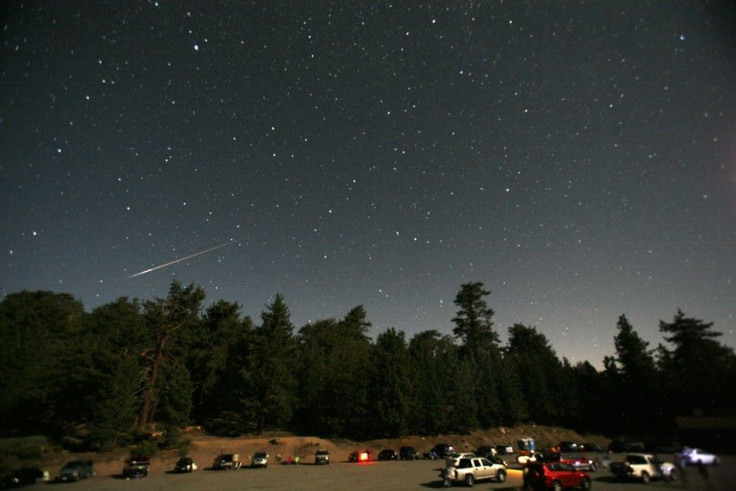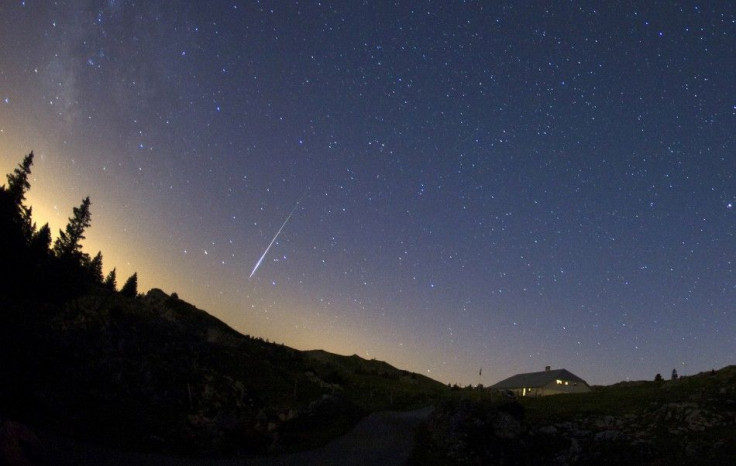Perseid Meteor Shower 2013 Viewing Tips: How To View The Best Meteor Shower Of The Year

The Perseid meteor shower is an eagerly anticipated yearly event that can be easily viewed around the world. But some locations and times are better than others for viewing the Perseids.

Each year, as the Earth orbits the sun, the planet runs into a stream of cosmic debris left behind by the comet Swift-Tuttle. Some of the dust and rock left behind burn up in the Earth's atmosphere as meteoroids, creating the Perseid meteor shower that occurs each August. Viewing of the Perseids can begin early in August, with the number of meteors increasing as the meteor shower reaches its peak on Aug. 12.
People in the Northern Hemisphere get a better view of the Perseids than those south of the Equator. At its peak, the Perseid meteor shower can average a hundred meteors an hour. In addition to regular meteors, the Perseids also give a large number of fireballs, larger meteors that will streak across the sky. Fireballs are larger than meteors and burn brighter and longer than their smaller counterparts.
The Perseid meteor shower is happening now but as we approach its peak, the chance to see hundreds of meteors dramatically increases. According to NASA, by Monday, the Perseids could average 100 meteors an hour whereas Meteor Showers Online has a more conservative 50 to 80 meteors per hour. To best view the meteor shower, try to get away from the city or any area with bright light. The best time to view the Perseids is not at night but early in the morning. Pre-dawn viewing of the Perseids is recommended as the radiant will be well above the horizon.
For stargazers, there is an easy to make sure you are spotting Perseid meteors and not one of the other meteor showers that also occur in August. Perseid meteors travel extremely fast, up to 132,000 miles per hour upon entering the Earth's atmosphere. Meteors from other showers are much slower. Tracing the meteors' point origin in the sky is another way to determine if you are viewing shooting stars from the Perseid meteor shower. They will appear to be coming from the constellation Perseus, so look to the northeast.

In the Southern Hemisphere, the Perseids will be difficult to view. As Meteor Showers Online reports, the Perseid radiant does not go above the horizon, reducing the number of meteors that can be viewed. But some meteors can still be seen, and those in the Southern Hemisphere should look toward the northern horizon.
There are plenty of helpful apps that can map out the night sky based on a user's location, such as Sky Map for Android or Star Walk for iOS, but astronomers say meteor shower viewing is a very simple process. Agence France-Presse notes that the favorable conditions of a waxing crescent moon will give the Perseids a chance to truly shine in the night sky. It takes some time for your eyes to get adjusted to the night sky, AFP notes, so viewers should make a night of it, taking 30 to 40 minutes to get adjusted prior to any attempted viewing of the meteor shower.
The Arlington Heights (Ill.) Daily Herald has some tips for viewing the Perseids in the Chicago suburbs but that advice also applies to viewers in other locations. The waxing crescent moon will all but vanish from the night sky by 11 p.m. local time, removing one source of light and creating a much darker setting for the shooting star light show. Larry Ciupik, senior astronomer at the Adler Planetarium in Chicago, spoke to the Daily Herald about the Perseids, and said viewers should wait until after 9 p.m. to begin looking for meteors.
The ideal time to view the Perseid meteor shower will be just after midnight. The weekend will be a fun prelude to the meteor shower's main event on Monday. The Perseids will average a dozen or more meteors per hour over the weekend leading up to a possible 50 to 80 meteors per hour during its peak. Sunday will be the best day to view the meteor shower prior to its Aug. 12-13 peak.
While viewers in the suburbs, or away from the bright lights of the city, will have the best chance to view the Perseids, city dwellers may also get lucky and catch a few meteors. There are also plenty of easily accessible viewing locations just outside of the city.
© Copyright IBTimes 2024. All rights reserved.






















